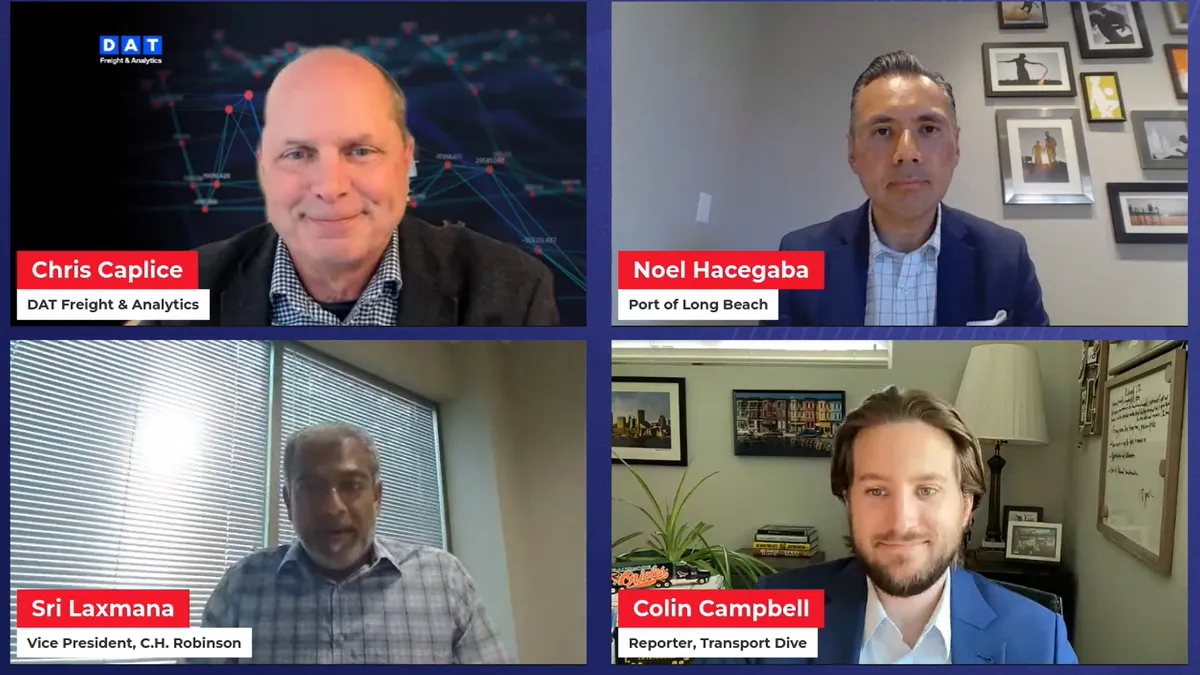Editor’s note: This story is part of a series highlighting takeaways from a July 11 event hosted by Supply Chain Dive, Transport Dive and Manufacturing Dive. Register here to watch the replay on demand.
While shippers may be enjoying competitive pricing and an abundance of carrier options right now, experts warn they shouldn’t expect that environment to last long.
Experts during Tuesday’s “Supply Chain Outlook: Trends and Risks to Watch in 2023” virtual event said the current soft freight market fueled by a weakened economy has led to an exodus of carriers, mostly small companies, who entered when demand was red-hot during the pandemic and now can’t afford to operate.
“Overall the markets are relatively soft [and] there is capacity,” Chris Caplice, chief scientist with DAT Freight & Analytics, said during the panel. While the situation isn’t long-term, he added that for shippers for now have the uppder hand, and the market eventually will hit a point where capacity and demand are in balance.
While shippers have the advantage, they continue to seek ways to cut supply chain costs so they’re prepared when carrier market conditions normalize, said Sri Laxmana, VP of Americas with brokerage C.H. Robinson.
“We’re trying and responding to customers to find ways to reduce waste and optimize savings and services across what I consider an increasingly complex global supply chain,” Laxmana said.
Experts said pinpointing when demand will return is the question both shippers and carriers want answered. Noel Hacegaba, deputy executive director of the Port of Long Beach, said inventory levels remain high at warehouses near the West Coast port, while traditional holiday peak activity that would normally be starting now hasn’t materialized.
“What we considered traditional peak and traditional holiday surges, we’re not seeing that,” Hacegaba said.
However, shipping activity could increase thanks to the tentative labor deal reached between the International Longshore and Warehouse Union and the Pacific Maritime Association in June. With fears over labor concerns likely addressed, Hacegaba is confident terminal activity will again be operating at 100%, though that too will take time because of weak economic conditions.
“We may see that [peak] in the months ahead ... we may see that blip,” Hacegaba said. “I think the second half of the year might be a little healthier than the first half but not by much.”













